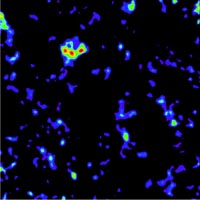The LSST total effective system throughput, AΩ = 318 m2 deg2,is nearly two orders of magnitude larger than that of any existing facility. LSST will enable a wide variety of complementary scientific investigations, all utilizing a common database. Of particular interest to particle physics, LSST will probe the physics of dark energy in multiple ways, as well as a measurement of the neutrino mass down to the 10 milli eV level. This will be done via data on the shapes, positions, and distances of billions of galaxies, plus a million supernovae.




